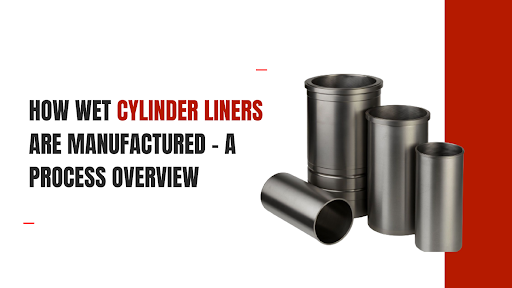One of the most important parts of a diesel engine in a car is the cylinder liner. It is a thin, hollow cylinder that fits into the engine block and holds the piston as it moves back and forth. The piston moves along the piston liner so fuel can be burned and the car engine can run.
Because the walls of the cylinder and the piston ring and skirt rub against each other, cylinder liners often wear out. So that this does not happen as much, a thin oil film is put on the cylinder wall. When the cylinder liner wears out, gets bent out of shape, or gets damaged, it can be removed and replaced.
Contents
Everything You Need To Know About Wet Cylinder Liners
Cylinder liners, the liquid used to cool the metal works right with it. This means the cylinder will fit right into your engine when it comes out of the box. It is an application with a seal, and its honing process controls the oil consumption and oil retention to lubricate the cylinder walls. All these steps ensure that the rings are put on smoothly and that they don’t wear out too quickly or use too much lubricating oil.
Cylinder liner manufacturers also make repositioning and maintenance faster since the pieces come ready to be put together.
Wet Cylinder Liner Quality Process
The production line uses four steps to ensure you get a good wet cylinder liner ready to be installed.
Centrifugation Process
First, there is the process of centrifugation. Here, the piece is joined together and ready for the next steps. It is important to remember that each liner is made with a single bushing of molten metal. This differs from dry liners, where each bushing is cut into three or four pieces.
Checking For Chemical Compatibility
When the wet liner comes out of the centrifuge, a small piece is cut off for structural analysis. This is the laboratory process. In this step, the lab teams check to see if the chemical composition meets the requirements. This control also happens with the piece’s structure, hardness, and other qualities.
This removed piece is always marked with its specifications, the code of the wet liner, and the order in which it was made. This helps keep track of the production process and ensures the product’s final quality.
Machining
When the lab says that all of the metal’s parameters meet cylinder liner manufacturers‘ quality standards, the third step, machining, can begin. Here, different types of machining are done to the wet cylinder liner. The internal and external profiles are made at this point.
Metrology
Lastly, in metrology, all the pieces’ sizes are carefully measured, taking into account the internal and external diameters and the height of the piece. The process is done with the help of different measuring tools, like the dosimeter, which checks all of the liner’s surfaces.
This is what makes sure that the piece softens and that your engine will last longer. After all, the new engine generation will ask for more cylinder liners, which will be exposed to more extreme conditions, wear, and high temperatures.




